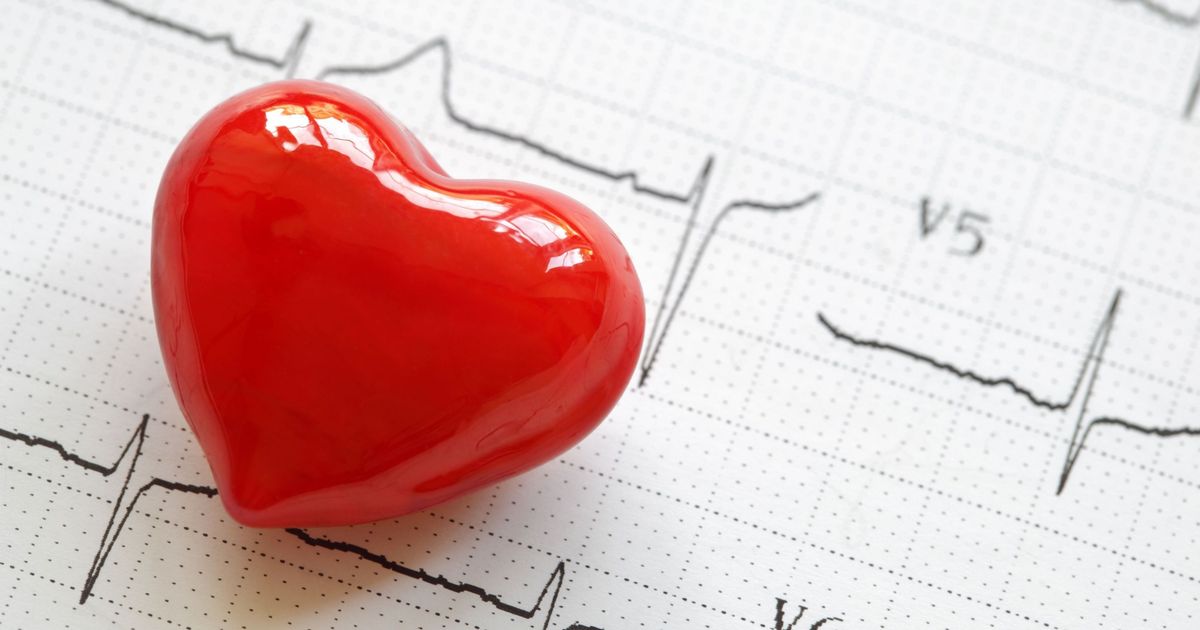Warning Signs Of Aortic Stenosis
Aortic stenosis is a condition where the aortic valve becomes functionally impaired due to the valve leaflets becoming too stiff or inflexible. The aortic valve alternates between closing when blood pumps from the left atrium to the left ventricle and opening when blood is pumped from the left ventricle into the aorta. The valve leaflets are thin and flexible to allow them to open fully and allow blood to flow from the heart. The valve leaflets become stiff due to an accumulation of scar tissue or calcium on the leaflet tissue in the heart. Rheumatic fever is a type of illness that can cause scarring of the aortic valve flaps. Anyone born with an abnormal number of aortic valve flaps may also develop aortic stenosis. Medical history, physical exam, echocardiogram, stress test, electrocardiogram, and cardiac catheterization are used to diagnose aortic stenosis.
Heart Murmur

Aortic valve stenosis patients may experience a heart murmur due to their condition. A heart murmur, an abnormal sound that occurs during an individual's heartbeat cycle, is produced by their blood moving in a turbulent motion in or near the heart. Heart murmurs cannot be heard by the bare ear and must be listened to with a stethoscope. The sounds that come from a healthy individual's heart can be described as a 'lubb-dubb' when the valves of the heart close. An individual's aortic valve is located between the left ventricle of their heart and the aorta, the main blood vessel that moves oxygenated blood from the heart out to the tissues around the body. When the valve is not opening completely, it produces a type of heart murmur referred to as a systolic murmur. It is common for the heart murmur caused by aortic stenosis to be most pronounced in the mitral area. The heart murmur is almost always present over the patient's right clavicle, which can help distinguish the aortic valve heart murmur from other types.
Dizziness And Fainting

Dizziness and fainting can occur in aortic stenosis patients through several different mechanisms. Because the forward stroke volume is not able to compensate in affected individuals when needed, the systemic vasodilation that occurs upon physical exertion causes the systolic blood pressure in the arteries to decrease. This decrease in blood pressure causes less blood flow to the brain tissues, which can result in dizziness and fainting. Abnormal heart rhythm episodes are also a cause for these symptoms in aortic stenosis patients, including ventricular or atrial tachyarrhythmias. Fainting can occur in an individual when they are at rest if they experience atrial fibrillation, ventricular tachycardia, or atrioventricular block. Patients who have aortic stenosis have increased internal pressure in their left ventricle, which can cause them to have abnormal vasodepressor reflexes that result in dizziness and fainting.
Chest Pain

Chest pain is a common symptom of aortic valve stenosis. The most common type of chest pain that occurs in aortic stenosis is referred to as angina pectoris. Unlike most patients who experience this type of angina, those with aortic stenosis-precipitated angina do not have coronary artery disease or atherosclerosis. Instead, angina pectoris in aortic valve stenosis patients is thought to occur because of inadequate left ventricular hypertrophy, a condition where the left ventricle of a patient's heart becomes thickened or enlarged. Just like any other muscle in the body that is forced to work harder over time, the heart muscle tissues begin to thicken and enlarge. This mechanism only occurs in the patient's left ventricle because that part has to work harder to push blood out of the malfunctioning aortic valve. The thick muscle tissues in the left ventricle of an affected individual can compress the coronary arteries that supply it with blood. This compression and blood restriction is what causes chest pain in aortic stenosis patients.
Shortness Of Breath

Individuals who have aortic stenosis tend to develop shortness of breath as a result of heart failure and the symptoms associated with it. Shortness of breath can happen due to diastolic dysfunction due to a patient's left ventricular hypertrophy. Ischemia in the coronary arteries can also produce shortness of breath in left ventricular hypertrophy patients. Another mechanism commonly associated with aortic valve stenosis precipitated heart failure is asymmetric interventricular septum hypertrophy. Asymmetric interventricular septum hypertrophy is a form of heart failure where the patient's septum becomes too thick towards the bottom left side and decreases the internal volume capacity of the left ventricle. The septum in the heart is the wall that separates the right chambers from the left chambers. This type of septal thickening results in reduced heart function that can cause shortness of breath.
Heart Palpitations

Heart palpitations occur when an individual experiences disturbances in the normal rhythm and speed of their heartbeat. Aortic valve stenosis patients tend to experience arrhythmias that are tachycardic in nature and irregularities in the pattern of their heartbeat. These abnormal beating patterns occur because the patient's heart has to work very hard to push a sufficient amount of blood out of the aortic valve that does not open entirely. Additionally, left ventricular hypertrophy can induce the same process when the hypertrophic heart cannot pump blood efficiently enough. When the patient's brain senses oxygen is not reaching vital tissues, it induces an increased breathing rate and signals the heart to beat faster. Fast heartbeats can be felt by the tissues and nerves close to the heart that send sensory signals to the brain. This process results in heart palpitations in aortic valve stenosis patients.
Fatigue

Aortic stenosis occurs when the aortic valve opening becomes too narrow, restricting the proper flow of blood. Blood cannot move from the left ventricle to the aorta properly and can produce adverse effects on the left atrium pressure. The aortic valve opening is located between the left ventricle of the heart and the aorta, the large artery responsible for supplying the rest of the body with oxygen-rich blood after it has come back from the lungs. When this opening is too narrow, less blood is flowing into the aorta at any given time. This reduced volume ability causes the tissues around the body to experience a general shortage of oxygen and other nutrients required for the cells to produce energy or ATP. Without enough energy being produced due to the lack of proper oxygen and nutrient supply, the body goes into a compensatory state where the energy produced is redirected to tissues critical for an individual's survival, like the heart and lungs. The redirection of cellular energy and the volume reduction of oxygenated blood in circulation is what causes an affected individual to experience fatigue.
Issues Gaining Weight

When the aortic valve opening is too narrow, the heart has to work much harder to pump enough blood around the body to meet its demand. The work burden on the heart requires more energy from the cells than it would otherwise. Energy is produced by the cells with nutrients and calories absorbed from the food an individual has consumed. Individuals who have a heart that is working very hard will require more calories and nutrients from their diet than they would if they had a healthy heart. Weight loss occurs when the individual's energy balance becomes negative, or when the calories being consumed does not exceed the calories being burned. Weight gain occurs when the individual's energy balance becomes positive, or when the calories they consume exceeds the calories they are burning. An individual will not gain weight if their energy balance does not become positive. Aortic stenosis patients tend to have a neutral or negative energy balance because their heart and body require more calories and nutrients than they would if they had a healthy heart.
Reduced Level Of Activity

Aortic stenosis causes a decrease in the amount of circulating blood in the body that is rich in oxygen. This malfunction occurs because the oxygenated blood returning to the heart from the lungs cannot flow into the aorta at a normal volume due to the valve opening being too narrow. A healthy individual who increases their level of physical activity requires a better and faster supply of oxygen to the tissues from the lungs and the heart. While it is good for a healthy individual to exercise their cardiovascular system, it can cause the heart and lungs of an individual who has a heart condition to become overwhelmed. Physical activity alone in a healthy individual is an increased burden on the heart, making it twice as much of a burden for the heart of an individual who already has compromised function. Aortic stenosis patients may experience lightheadedness, shortness of breath, and fainting upon physical exertion because their cardiopulmonary system cannot handle the increase in demand. Thus, they often have a reduced activity level because of this.
Swollen Legs And Feet

Blood around the body that is depleted of oxygen moves through the veins back to the heart before it is pumped into the lungs. Once in the lungs, blood undergoes carbon dioxide exchange for oxygen before being pumped back into the heart and then out into the aorta. When the aortic valve opening is too narrow, it can cause the back up of blood in the venous circulation because a larger amount of oxygen-poor blood is trying to reach the heart than the amount of oxygen-rich blood leaving the heart into the aorta. The veins can be flexible and expand to a certain degree to adapt to high volumes of blood. However, the veins can only stretch so far and will experience an increase in wall permeability once that flexibility threshold has been met. The increased permeability in the venous walls allows for fluids to leak out of the bloodstream into the neighboring tissues. Venous blood tends to pool legs and feet from the force of gravity, forcing more fluids into these tissues during venous circulation backup. The increased fluid volume in the feet and legs causes them to swell.
Poor Feeding

An infant affected by aortic stenosis may experience poor feeding as an indicative symptom of their heart malformation. Aortic stenosis causes the blood to back up in the right side of an individual's heart and their lungs, as more blood is entering cardiopulmonary circulation than leaving it through the aorta. This malfunction occurs because the aortic valve opening is too narrow and does not allow a normal volume of blood to move through the opening. The backup of blood in the lungs and right side of an individual's heart can cause them to experience respiratory distress or problems with their breathing. The backup of blood in an individual's lungs because of their narrowed aortic valve opening can cause them to experience chest pain. Another complication of aortic stenosis is pulmonary edema or the buildup of fluid in the lungs due to being overloaded with blood. Blood vessels that meet their maximum expansion ability can allow fluids from the blood to leech into surrounding tissues. In aortic stenosis, this malfunction occurs in the lungs. The discomfort in the chest area due to blood overload and pulmonary edema can cause an affected infant to experience poor feeding.
